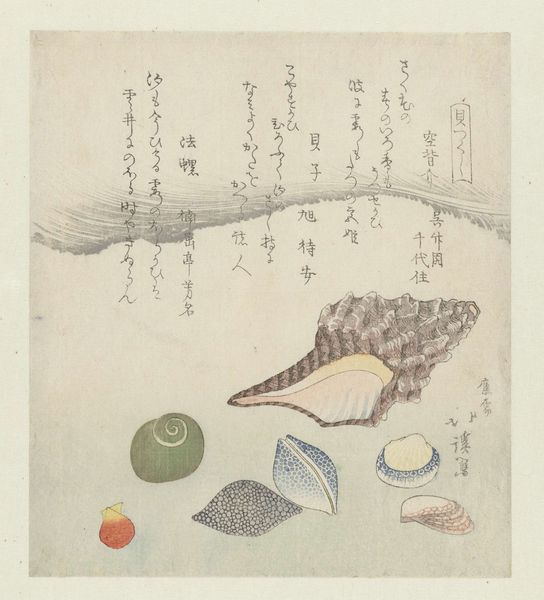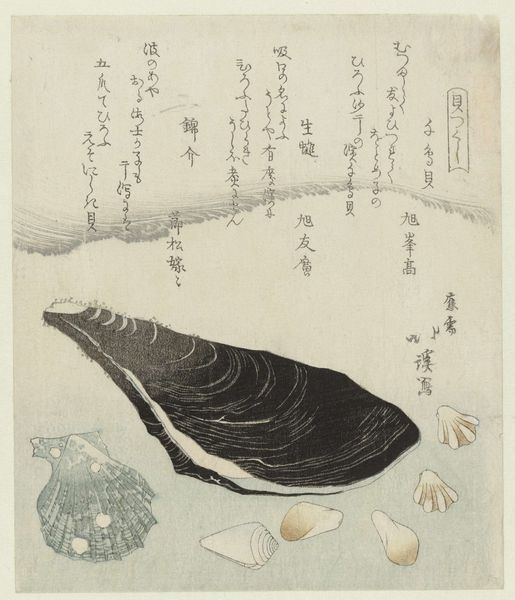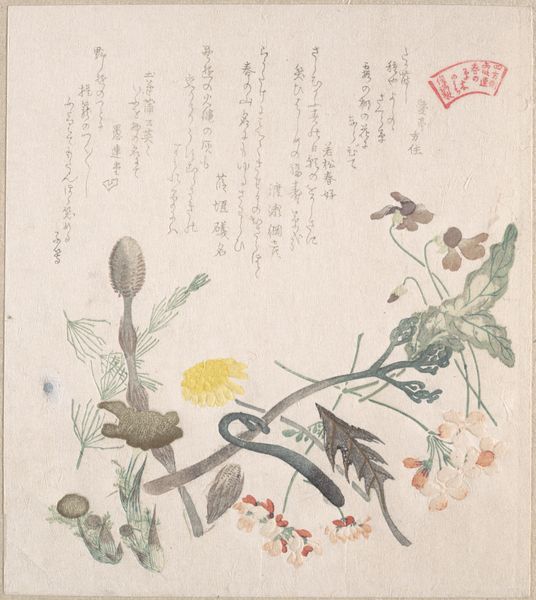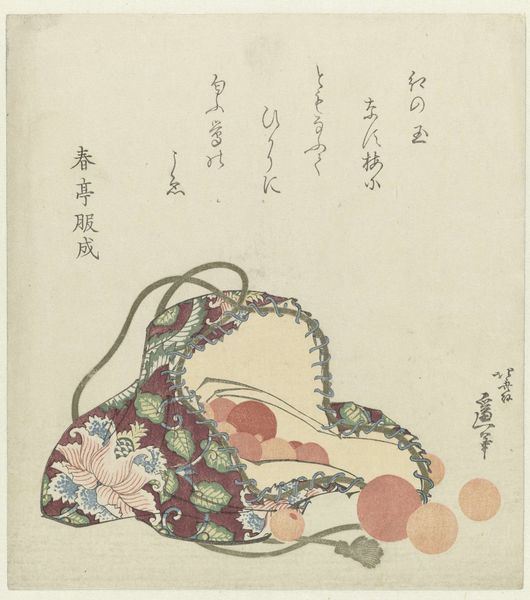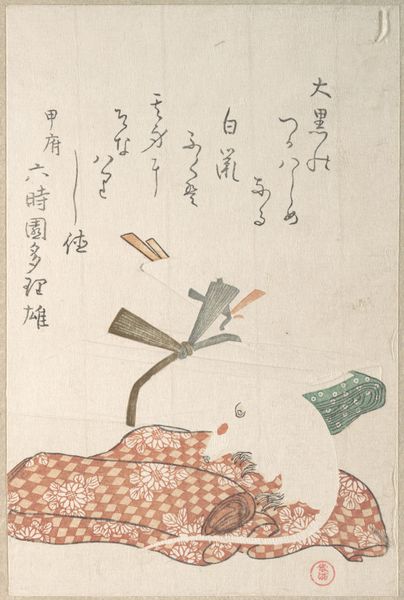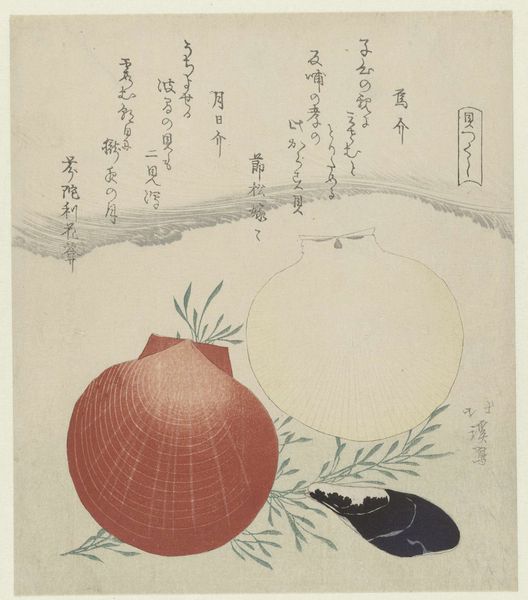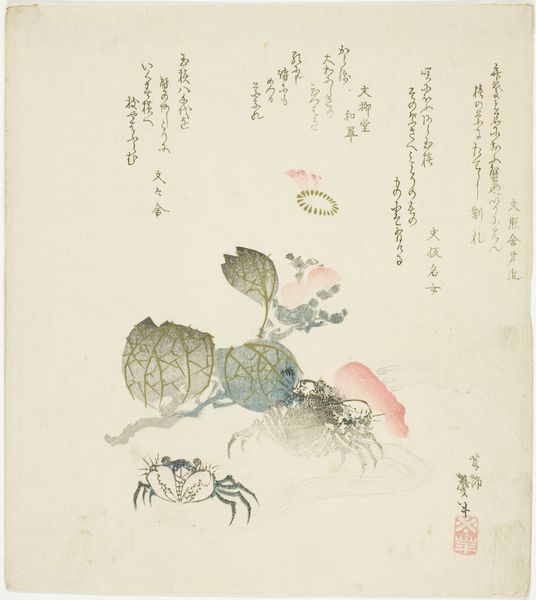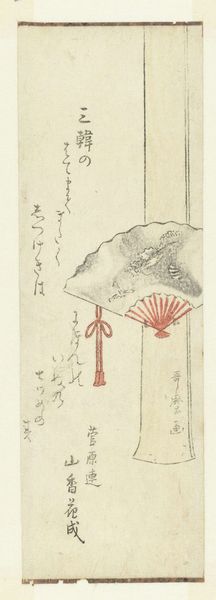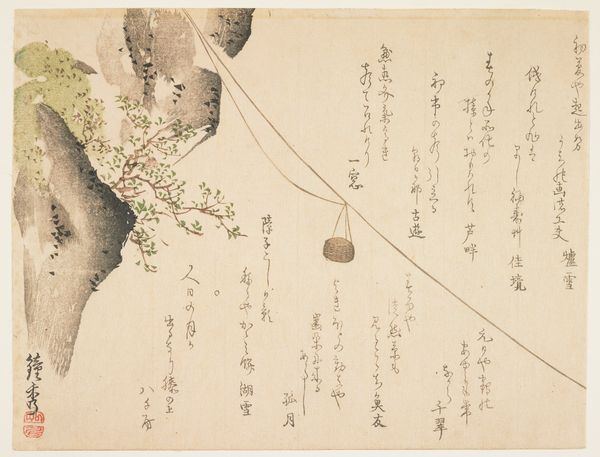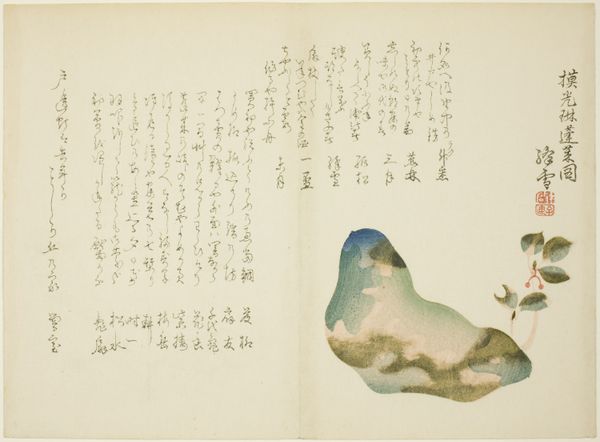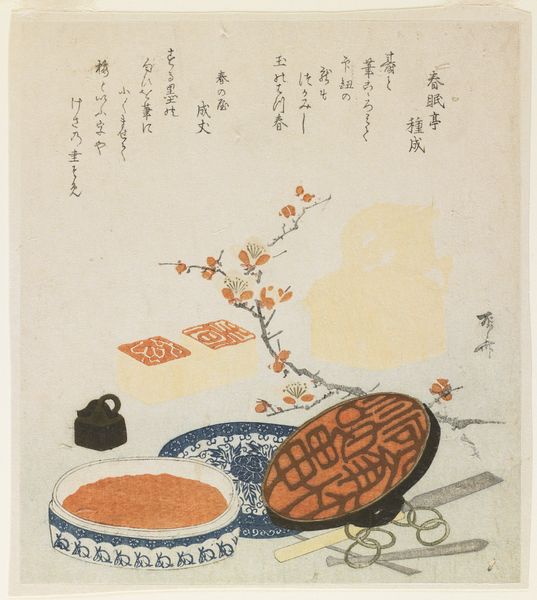
drawing, print, ink, woodblock-print
#
drawing
#
blue ink drawing
# print
#
ukiyo-e
#
ink
#
woodblock-print
#
watercolor
Dimensions: height 209 mm, width 182 mm
Copyright: Rijks Museum: Open Domain
Curator: Here we have Totoya Hokkei’s "Round Red and Blue Shell with Smaller Shells," dating back to 1821. It’s a beautiful example of ukiyo-e, crafted as a woodblock print using ink. Editor: It's intriguing! I am immediately struck by the composition – the wave at the top, almost calligraphic, contrasted with the static arrangement of the shells below. It evokes a sense of fleetingness against the permanence of nature, wouldn’t you say? Curator: Absolutely. The juxtaposition is deliberate. Hokkei, and ukiyo-e in general, were often commissioned, serving a wider audience than simply the wealthy elite. We see in this piece an echo of the Japanese aesthetic valuing nature, as well as the inherent social implications of the rise of art during that period. Editor: Exactly! I wonder what the rise of printmaking meant for class structures and accessibility to nature in the cities? The poem written on it surely must add to its layered interpretations, don’t you agree? Is this art object speaking against exploitation or a celebration? Curator: Indeed. I would also add the placement of text along with objects from nature helps with communicating broader narratives such as class and capitalism within ukiyo-e’s time of popularity. Editor: Perhaps its commercial aspects are intrinsically linked to larger changes regarding the political landscape of 1821. We need to explore the context surrounding ukiyo-e further when evaluating the meaning of this piece. Curator: It definitely provides further perspective to this genre! It pushes us to not only understand what art has come to mean but how it has changed and expanded given global access to artwork of the past and present. Editor: Looking at Hokkei’s work, it makes you think about how social context and identity shapes both art production and our reception to it.
Comments
No comments
Be the first to comment and join the conversation on the ultimate creative platform.



